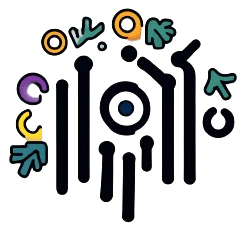Design for Aesthetics vs. Design for Social and Ecological Harmony
| Criteria | Design for Aesthetics | Design for Social and Ecological Harmony |
|---|---|---|
| Primary Focus | Prioritizes visual appeal, form, and sensory engagement. | Emphasizes the integration of design with social values and environmental sustainability. |
| Key Principles | – Proportion, balance, symmetry. – Use of color, texture, and materials to create visual impact. | – Responsiveness to community needs, inclusivity, and cultural sensitivity. – Emphasis on resource efficiency, renewable materials, and reduced carbon footprint. |
| Design Process | – Typically begins with concept sketches focusing on form and appearance. – Iterative process to refine the visual elements for maximum impact. | – Begins with stakeholder engagement to understand social, cultural, and ecological contexts. – Iterative process that includes feedback from community and environmental assessments. |
| Material Selection | – Focus on materials that enhance visual and tactile qualities (e.g., metals, glass, high-grade plastics). | – Preference for sustainable, renewable, and low-impact materials (e.g., bamboo, recycled plastics, natural fibers). |
| User Experience (UX) | – Prioritizes the emotional and sensory experience, aiming to evoke pleasure and satisfaction through aesthetics. | – Focuses on usability, accessibility, and the impact of the design on both individuals and communities. |
| Technological Integration | – Incorporates cutting-edge technology for visual enhancement (e.g., OLED displays, advanced coatings). | – Utilizes technology that supports sustainability and social equity (e.g., energy-efficient systems, smart tech for resource management). |
| Cultural Considerations | – Often draws from historical or contemporary art movements to resonate with cultural aesthetics. | – Integrates local and indigenous knowledge, ensuring cultural relevance and respect. |
| Environmental Impact | – May prioritize aesthetics over environmental concerns, leading to potential issues such as resource depletion or pollution. | – Designed to minimize ecological footprint, often involving lifecycle assessments and closed-loop systems. |
| Market Appeal | – Appeals to consumers with a strong appreciation for design and visual quality, often linked to luxury markets. | – Appeals to environmentally conscious consumers and communities, often associated with ethical brands. |
| Longevity and Durability | – Focuses on creating timeless designs that maintain aesthetic value over time. | – Prioritizes durability and adaptability, ensuring that the design remains functional and relevant over its lifecycle. |
| Examples | – Iconic architecture like Frank Gehry’s Guggenheim Museum. | – Eco-friendly urban planning projects like Copenhagen’s bicycle infrastructure. |
| Challenges | – Risk of overemphasizing form over function, leading to practical limitations. | – Balancing ecological goals with social equity can be complex and context-dependent. |
The focus of each design approach ultimately serves different but complementary goals.
